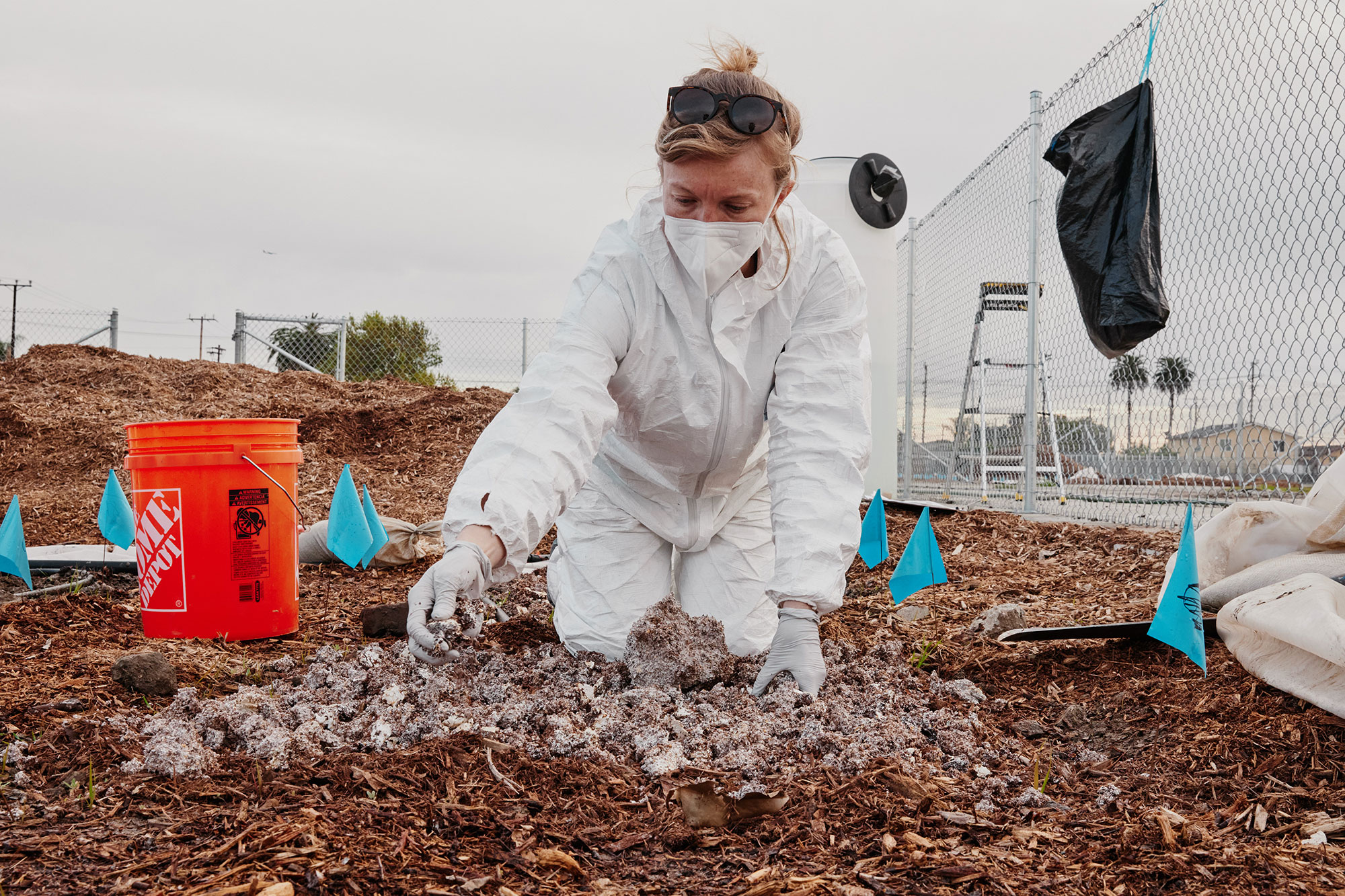Environment & Energy
Related: About this forumCan Scientists Harness the Magic of Mushrooms to Clean Up Polluted Landscapes?
Researchers and grassroots activists are working with fungi to restore damaged environments

Environmental toxicologist Danielle Stevenson spreads soil and wood chips inoculated with fungi at a polluted lot in Los Angeles. Adam Amengual
Lauren Oster
May 12, 2025 8:00 a.m.
Ever since the HBO series “The Last of Us” hit screens in 2023, people have grilled Danielle Stevenson with their fears over a mushroom-induced dystopia. On the show, a fungus mutates and sparks a global zombie apocalypse, and as a scientist who studies fungi and how they can actually help society, Stevenson is ready to assuage their concerns.
“A common question in the public space is, ‘But if you use fungi to eat pollution, will they eat our house and our building and our faces and the whole world?’” Stevenson says.
“They will not,” she often answers. “They’re a nature-based approach to handling our waste.”
Stevenson’s work focuses on mycoremediation, a technique that uses fungi to rehabilitate polluted land. Mycoremediation harnesses fungi’s natural abilities to collect contaminants scattered in soil and either concentrate them so that they can be removed or break them down into materials that aren’t harmful.
The fungal kingdom is host to an estimated 2.2 million to 3.8 million species, ranging from single-celled yeasts to the largest organism in the world, a sprawling member of the honey mushroom genus that occupies more than 2,000 acres of soil in eastern Oregon. Once considered more similar to plants than animals, fungi can’t create their own food through photosynthesis; instead, most of them obtain nutrients from dead or decaying organic matter. To do so, fungal cells secrete enzymes that break insoluble carbohydrates down into simpler sugars that those cells can absorb and store. That ability to decompose and metabolize nutrients makes them invaluable contributors to ecosystems around the world. Fungi transform materials that plants and animals otherwise wouldn’t be able to use to their benefit.
More:
https://www.smithsonianmag.com/science-nature/can-scientists-harness-the-magic-of-mushrooms-to-clean-up-polluted-landscapes-180986561/
WhiteTara
(30,746 posts)Mycilium can remediate the damage done to the earth
mountain grammy
(27,796 posts)The Last of Us is pretty realistic and convincing.
![]()